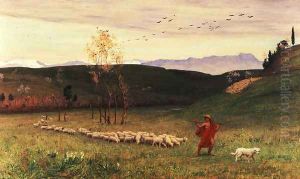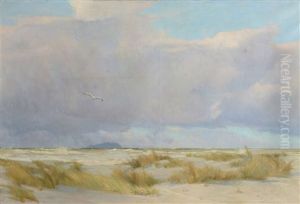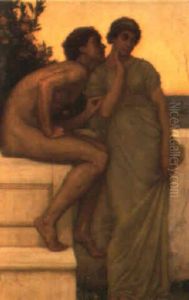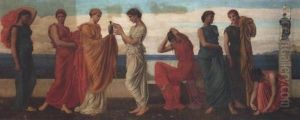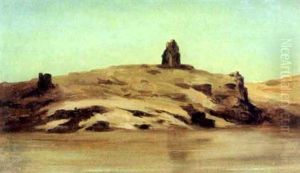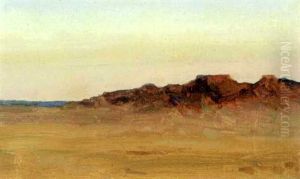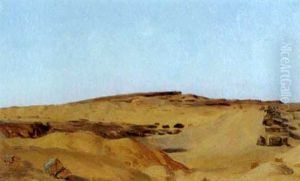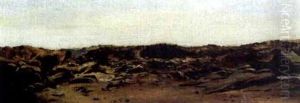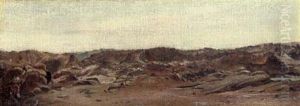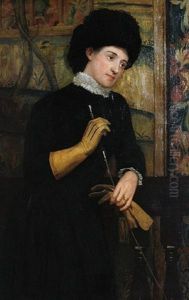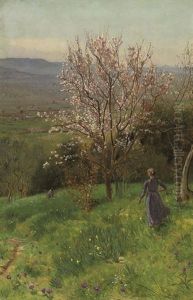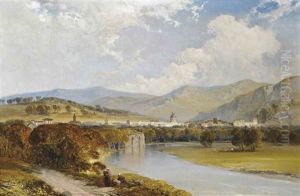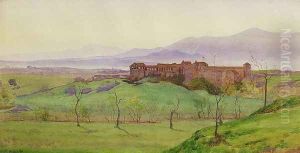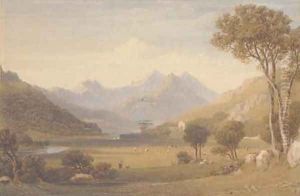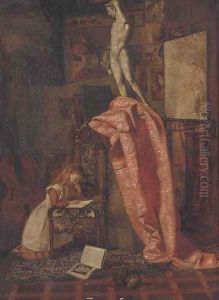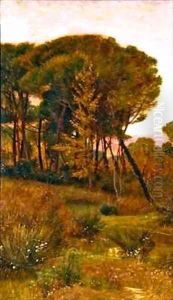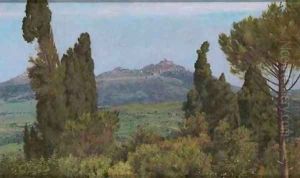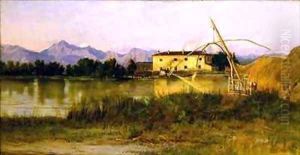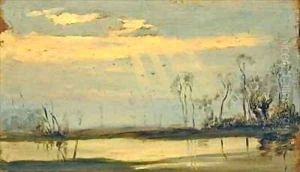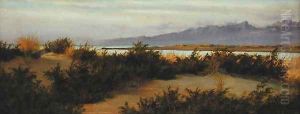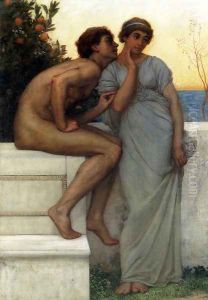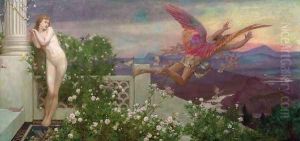Matthew Ridley Corbet Paintings
Matthew Ridley Corbet was an English painter who played a notable role in the art scene of his time, particularly within the sphere of British landscape and portrait painting. Born in 1850, Corbet was part of a generation that witnessed significant transformations in the art world, especially with the burgeoning influence of the Impressionist movement from France. Despite these evolving artistic trends, Corbet's style remained deeply rooted in the traditions of the British School, reflecting a blend of realism and romanticism that was characteristic of the period.
Corbet's early life was marked by an immersion in the arts, fostered by a conducive family environment and education. He pursued formal art education, which was a common pathway for artists of his era, seeking to refine his technique and establish a foundation for his artistic career. Throughout his life, Corbet was deeply influenced by the landscapes and cultures of Britain, which served as the primary subjects of his work. His paintings often depicted the serene countryside, coastal scenes, and historical architecture, capturing the quintessential beauty of the British Isles with a delicate touch and attention to light and atmosphere.
In the latter part of the 19th century, Corbet became associated with the New English Art Club (NEAC), a group of artists who sought to challenge the conventional norms of the Royal Academy and promote a more progressive approach to art. The NEAC was instrumental in introducing Impressionist techniques to the British art scene, and while Corbet's work did not fully embrace Impressionism, the influence of the movement is evident in his use of light and color.
Despite his affiliation with the NEAC, Corbet remained somewhat peripheral to the core group of British Impressionists, carving out a distinct niche for himself that was appreciated by both critics and the public. His portraits, in addition to landscapes, received commendation for their depth and sensitivity, showcasing his versatility as an artist.
Matthew Ridley Corbet's contribution to British art was cut short by his untimely death in 1902. However, his legacy endures through his works, which continue to be celebrated for their evocative portrayal of Britain's natural beauty and architectural heritage. Corbet's art remains a testament to the enduring appeal of traditional landscape and portrait painting, even amidst the changing tides of artistic movements and styles.
